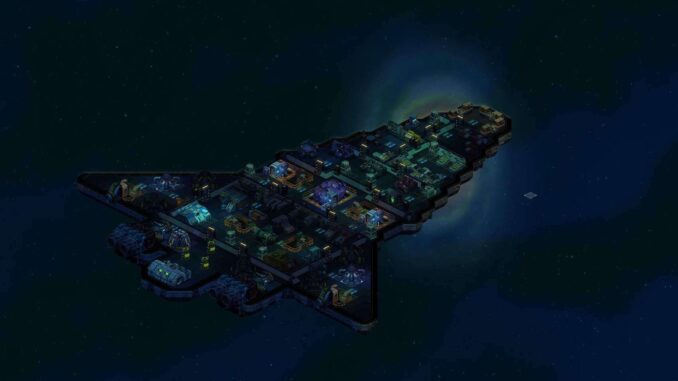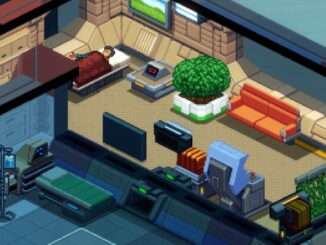
Various data on electricity generation and food/water.
Guide to Calculate Energy and Agriculture
Preface
This guide contains some calculations relating to the specifics of how electricity is produced, how crops are grown, and what resources go in to producing them. I originally started taking some notes out of curiosity on just how many energy rods I was using and where my water was going, and eventually decided to fully test some facets of their use to try and get a handle on their consumption.
Some of this data might be inaccurate on extrapolation, but basic information (Crop growth time, game time, etc) should be correct. I will continue to test these values in practical situations to get better results, but with the advent of alpha 10 coming which changes a number of things, I’ve decided it would be best to publish this guide early where it might still get some use.
Alpha 10 makes several changes to the game which skews some of these calculations, particularly in food, so if you’re playing the experimental branch, they won’t be accurate.
Scroll down to the Summary if you’re more interested in the practical uses for these calculations, as the entire guide really just boils down to that knowledge in the end and is mostly included so other players might have access to my methodology for their own tests.
Time
Time in the game is divided into days and further subdivided into 24 hours. To note, every in-game hour passes in 60 real time seconds, making a full day 1440 seconds in total. This can be useful to know when dealing with energy consumption and production, as most of those values are listed in electricity/second calculations.
Power Generation
Generators come in three sizes, each having different levels of efficiency. Each generator consumes .002 energy rods to produce the listed energy: 15 Energy per second for the smallest generator, 25 per second for the middle generator, and 40 per second for the biggest generator. In this way, the largest generator produces more than twice as much electricity per energy rod spent, which makes it the most optimal choice of generator in all situations, space permitting.
A single energy rod is worth 7500, 12500, or 20000 electricity depending on the size of the generator. To conserve energy rods, use the largest generator!
Assuming a generator is running at maximum capacity, it will consume one energy rod every 500 seconds, or every 8 minutes, 20 seconds, or roughly 3 energy rods per day. Your generators won’t often run at maximum capacity, however, as their output is dependent on the needs of the electrical grid. Therefore, each generator will only produce energy when it needs to, which can greatly reduce the amount of energy rods consumed.
Solar Energy
Solar Panels allow you to freely generate electricity based on your proximity to the system’s sun. At maximum efficiency, a single solar panel will generate 3 electricity per second. Therefore, enough solar panels will allow you to forgo consuming energy rods entirely, making you completely independent from energy rod needs.
Practically speaking, however, you might not be able to place enough solar panels to cover all of your energy needs. This is especially true when in distant systems where solar panel efficiency is poor; it’s possible that a solar panel might only generate .5 electricity per second in the most distant systems, which isn’t even enough to constantly run a heat exchanger. In these cases, solar panels will need to be used in parallel with generators, though this is somewhat difficult due to generators still attempting to produce power independently of solar panels; the solar panels wind up not being fully utilized, further reducing their efficiency.
It seems that feeding solar panels into a generator unidirectionally will mitigate this issue to some extent. The solar panels will dump as much power as possible into the generator and the generator will reduce its power output (And thus energy rod consumption) appropriately.
Electricity Storage
One thing to note about the electrical grid is that objects that can store electricity (All generators, solar panels, batteries, and power nodes) attempt to balance their electricity between themselves by a percentage level. For example, if a solar panel (holds 50 energy) and a battery (holds 1000 energy) are connected to each other and nothing else, they will attempt to maintain a similar percentage of their total energy stored: The solar panel might hold 25 energy, and the battery 500 energy (Exactly 50% of their total capacities); The solar panel might hold 40 energy, and the battery 800 energy (80% of their capacity). The solar panel, even when set to only transfer electricity out of itself to the battery, won’t actually charge the battery until its total capacity by percentage is lower than the solar panel’s, and if bi-directionally connected, the battery will actually feed some electricity back into the solar panel.
This has some implications when utilizing batteries to supply the power grid of a ship alongside a generator. Specifically, it makes it impossible to fully utilize a battery to supply energy to your ship alongside a generator, which will begin to produce more electricity as the battery’s levels fall. This means that during electrical grid spikes, such as when industrial equipment is being used, even if you had enough electricity stored in batteries to cover it, your generator will still want to run to cover the deficit instead of waiting for solar panels to catch up during the electrical dip.
In practice, this can be mitigated with manual management of your generator. Clicking Stop with it selected will prevent it from continually using rods, but can be somewhat cumbersome if the generator would need to run to cover some deficit of power. Changing the functionality of uni-directional power supply to supply all power to the connected device, regardless of power levels, would allow for batteries to be fully drained before the generator began producing power.
Agriculture
If properly tended and supplied, it takes almost exactly 3 days for crops to reach full maturity. By this measure, you can produce 2 root vegetables, 2 fruits, 1 artificial meat, or 1 fiber every three days per space in grow beds. This also means that crops will require .7 water and .1 fertilizer every three days as well.
After some testing, it seems like an optimal configuration of grow bed slots to water collectors is around 15 grow bed spots per water collector. This allows the water collector to run at full speed and produce one unit of water per day. This means that while 15 grow beds will consume an average of 3.5 water per day, a water collector will reclaim one unit of water per day, which reduces your water consumption for grow beds by 30%.
Note that water vapor levels seem to stabilize at a certain point when you have enough water collectors. The water vapor in the air ranges from 0 to 255, and you can tell if you need more or less collectors based on how close to those values you are: At 0 vapor, you have too many collectors, at 255 vapor, you don’t have enough collectors, and if you’re continually hovering around the 80-160 mark, you have around the optimal amount of collectors.
Artificial meat will produce water vapor just like other crops, although it doesn’t produce biomass.
The Water Collector
One water collector running continuously will produce one unit of water per day (Assuming there’s enough water vapor in the air to cycle through) at the cost of 5 units of electricity per second. This equates to 300 units of electricity per hour, or 7200 units of electricity per day. In other words, each water collector turns .36 energy rods into 1 unit of water, assuming you’re not gathering electricity from solar panels.
The X1 Toilet
Crewmen will use the toilet once per day on average–this will be reduced if they’re not eating well enough. Every five toilet uses will reclaim one unit of water and one biomass. Thus with a crew of five, expect an extra unit of water to be generated every day, with a little extra from biomass composting.
Biomass and Composting
Anything other than artificial meat in grow beds will produce one biomass in addition to its finished product. Biomass can be composted into .1 unit of water, .02 units of fertilizer, and .02 units of carbon. In this way, each root vegetable, fruit, or fibers plant will return an additional .1 water over time, in addition to .02 fertilizer, lowering the cost of those plants to .6 units of water and .08 fertilizer.
Alien and human corpses, along with alien and human meat, can be composted as well. It seems marginally more efficient to dissect corpses into meat before composting them, as this will return slightly more raw chemicals and carbon at the expense of requiring more space in a composter. Each corpse dissects into 3 meat of either type, so water generated from composting will remain the same.
Food Consumption
Crewmen seem to consume around 1 total unit of food per day, but in practice the type of food eaten and time consumed varies based on current nutrition levels. Crewmen will only eat when their food level (tracking stomach contents) is at 0 on their status pane. It takes around 12 hours for a full stomach to empty out, but crewmen won’t eat unless they’re in free time, so in practice crewmen seem to eat a large meal once per day. Note that for prisoners, because they’re essentially always in free time, they will eat twice as much food–two units per day vs one unit for normal crewmen. This means keeping a large amount of prisoners on board a ship can drastically increase your food consumption.
Water Reclamation Calculations
The following sections are mostly calculations using the above data. While initial testing has shown it to be accurate, long term checking for edge cases hasn’t been done, so there may be times when this data isn’t correct.
As crewmen need about one unit of food per day, and it takes three days to grow any type of food, this translates to requiring three grow beds for every two characters (Assuming specifically root vegetable/fruit diets) or three grow beds for every one character, assuming artificial meat only diets. Producing a balanced diet of equal parts fruit, vegetables, and meat would need four grow beds for every two crewmen, which would produce two vegetables, two fruit, and two meat every third day. To further reduce the equation, each crewmen’s daily ration requires 5 water when all is said and done, before water reclamation through collectors, toilets, and composting.
When taking all methods of water reclamation into account, this number can be drastically reduced. Assuming four grow beds per two crew, over the course of three days, 2.8 units of water will be spent growing crops. The two crewmen will generate 1.2 units of water by both using the toilet once per day, along with 1.2 biomass. Added to the 2 biomass produced by the vegetable and fruit beds, this will refine into 32 units of water (Along with 064 fertilizer). Four grow beds will produce enough water vapor to supply 2667 units of water per day by a single water collector, or exactly .8 units of water every three days. Adding this all up gives a return of 2.32 units of water for the initial 2.8 spent, resulting in a net loss of .48 units of water per two crewmen every three days; or, when reduced down further, a loss of 08 units of water per day per crewmen. While not possible to create a complete closed ecosystem with zero net loss, it does mean that each crew member only uses on average 1 unit of water every 12.5 days at peak efficiency.
By contrast, it will take one unit of fertilizer per 9 days to grow enough food for each crewman, meaning that given exceedingly long stretches of time, chemicals might become just as much of an issue as water.
Summary
- Generators ran at full capacity constantly use about 3 energy rods per day.
- Each solar panel producing 3 electricity per second produces around .216 energy rods worth of electricity per day (Less for further distance to the sun).
- Solar panels become vital for reducing energy rod use, even if they don’t fully cover your energy needs. Try to have 2-4, at least.
- Feed solar panels uni-directionally into generators to reduce energy rod usage.
- Batteries work poorly in parallel with generators, which will always attempt to quickly top them off or generate their own power in the system, and should be saved for pure solar panel systems or heavy industrial machines.
- Four Grow Beds spots in the configuration of 1 vegetable, 1 fruit, and 2 meat can sustain two crewmen indefinitely, though having slightly more can cover lapses in work schedules.
- Prisoners eat twice as much food as crewmen due to constant access to food (Crewmen would eat twice a day, but their work schedules prevent them from doing so).
- Every 15 or so Grow Bed spots needs one water collector. Crewmen produce a small amount of water vapor themselves.
- The toilet is almost just as important as a water collector for getting water back.
- Composting Biomass returns around 1/7 of the water used to grow crops for those that produce it, along with 1/5 of the fertilizer.



Nice work. A possible solution for power is to make a single direction of solar energy -> battery -> generator -> all else.